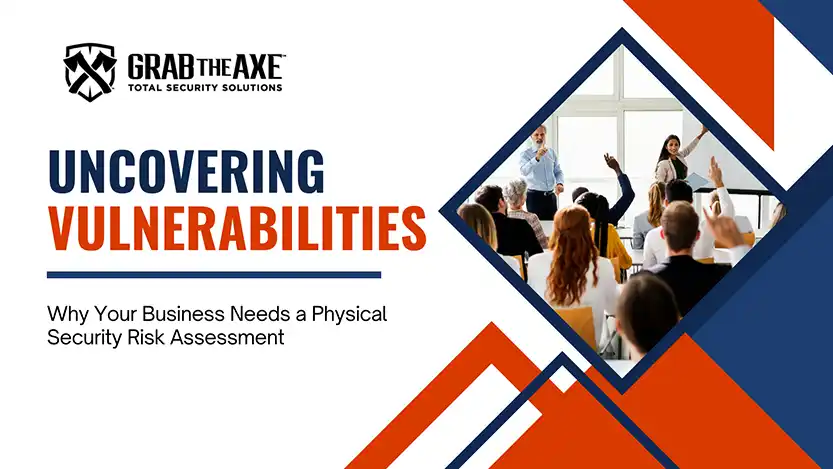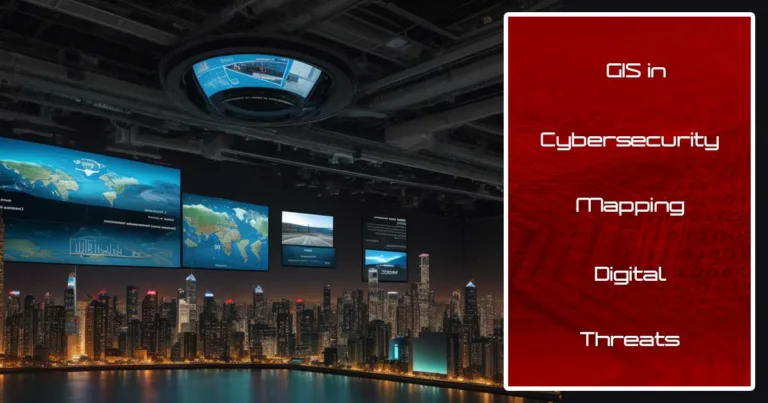When businesses think about security, they often focus on the digital landscape—firewalls, encryption, and malware protection. While these are critical, one major vulnerability often gets overlooked: physical security. The doors, windows, and access points at your facility may be quietly inviting trouble if they aren’t properly secured.
A physical security risk assessment ensures that your business is not just focused on the digital threats but also protected against the physical ones—whether it’s break-ins, unauthorized access, or natural disasters. Today, businesses of all sizes, from corporate headquarters to schools and manufacturing plants, can benefit from these assessments. Let’s dive into what makes these evaluations essential and how Grab The Axe can help fortify your physical security.
What is a Physical Security Risk Assessment?
A physical security risk assessment is a comprehensive evaluation conducted by security professionals to identify the physical vulnerabilities of your facility. This process doesn’t just look at whether you’ve locked the doors; it digs deep into every element of your building’s protection, including external threats, internal risks, and even natural disasters.
A robust assessment includes:
-
- Perimeter Security: Evaluating fences, gates, and surveillance systems to ensure there are no weaknesses that allow unauthorized entry.
-
- Access Control: Analyzing how employees, contractors, and visitors enter your building. Are your credentials—like keycards or biometric scanners—up to par, or are there outdated systems in place that could be easily bypassed?
-
- Internal Security: Identifying weak points within your facility, such as unsecured rooms or improper storage of sensitive materials.
-
- Emergency Preparedness: Does your building have the necessary systems in place for fire suppression, flood prevention, or an emergency evacuation? This element is often overlooked but is a critical aspect of a complete security plan(Bulletproof Windows)(LenelS2).
Why is a Physical Security Assessment Important?
As digital threats continue to evolve, so do the risks in the physical realm. Here are some key reasons why every business should consider a physical security assessment:
-
- Preventing Breaches Before They Happen: Most companies only recognize vulnerabilities after an incident occurs—whether it’s a break-in or a disgruntled ex-employee gaining unauthorized access. By identifying these risks ahead of time, a physical security assessment helps prevent costly breaches before they occur(Bulletproof Windows).
- Adapting to Technological Threats: Just as criminals have become more adept at hacking, they’ve also gotten better at physical break-ins, using modern tools and techniques. Staying ahead of these evolving threats means regularly updating security systems and practices.
- Regulatory Compliance: Depending on your industry, compliance with regulatory bodies such as OSHA, GDPR, or sector-specific mandates may require periodic security assessments. Not only can this save you from fines, but it also ensures the safety of your employees and clients.
- Protecting Assets and People: Whether you’re safeguarding intellectual property, sensitive data, or the well-being of your employees, physical security is the first line of defense. Your physical location’s vulnerabilities can easily lead to devastating losses if not addressed in advance.
The Benefits of Proactive Security Assessments
Being proactive about your physical security doesn’t just offer peace of mind—it can save your business money, reduce risk, and even help with insurance premiums. Here are some of the tangible benefits:
-
- Cost Savings: Identifying and mitigating risks before they turn into incidents can save you significant costs in damages, legal fees, or lost productivity.
-
- Insurance Incentives: Many insurance companies offer reduced premiums for businesses that actively engage in risk management through security assessments.
-
- Liability Protection: If an employee or client is harmed due to security lapses, your business could be held liable. Conducting thorough security assessments and following professional recommendations offers critical protection against legal challenges.
What Happens During a Physical Security Assessment?
When you partner with Grab The Axe, our security consultants follow a detailed, multi-step process to evaluate your facility. Here’s how it works:
-
- Initial Consultation: We’ll meet with your team to understand your concerns and any previous incidents, and we’ll start by reviewing your current security measures.
- Site Evaluation: We’ll walk through your property to assess everything from perimeter security to interior rooms and access points.
- Vulnerability Identification: Using industry standards and best practices, we’ll identify weak points that could lead to unauthorized access, damage, or loss.
- Recommendations: We provide actionable steps to address each vulnerability, from upgrading locks and installing cameras to securing sensitive rooms and implementing biometric access control(LenelS2).
- Follow-Up: Security is not a one-time fix. We offer follow-up assessments and continuous monitoring services to ensure that your facility stays secure as threats evolve.
Why Choose Grab The Axe?
At Grab The Axe, we understand that physical security isn’t just about locking doors—it’s about protecting what’s most valuable to you, whether that’s people, data, or property. Our expert team is equipped to provide security assessments that go beyond checklists, offering tailored solutions that fit your unique environment.
Whether you’re a corporate office, a school, or a manufacturing plant, you can’t afford to ignore physical security risks. Reach out to Grab The Axe today to schedule your physical security risk assessment and protect your business from vulnerabilities you may not even know exist.
Secure your business and stay ahead of physical security threats with a professional risk assessment from Grab The Axe. Contact us today to get started.
References:
National Institute of Standards and Technology (NIST). (2015). Guide for conducting risk assessments (Special Publication 800-30, Revision 1). U.S. Department of Commerce. https://doi.org/10.6028/NIST.SP.800-30r1
Physical Security Risk Assessments – To Learn More:
Why Phoenix Security Services Must Include Comprehensive Assessments
Secure Your Business Future with Comprehensive Physical Security Assessments – Grab The Axe
Navigating WISP Compliance: What CPA Firms Need to Know About FTC and IRS Requirements





